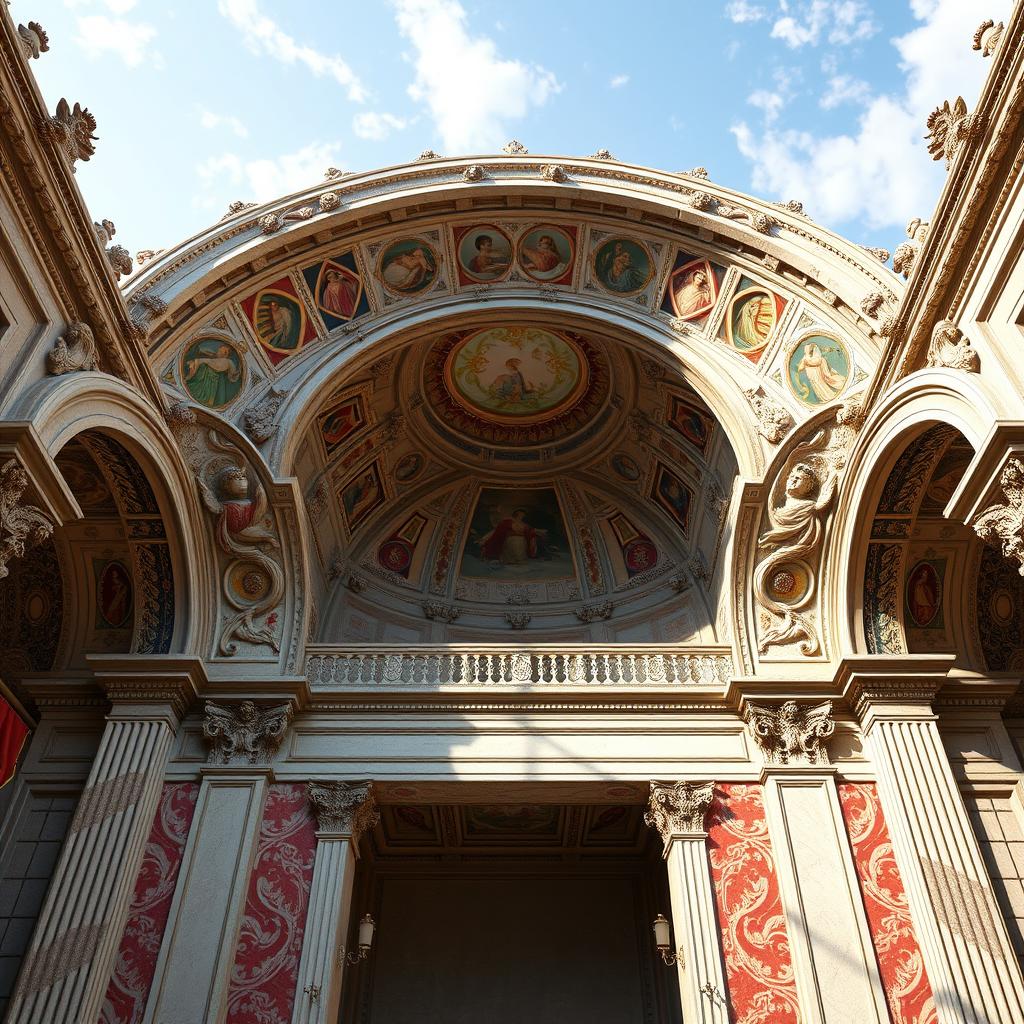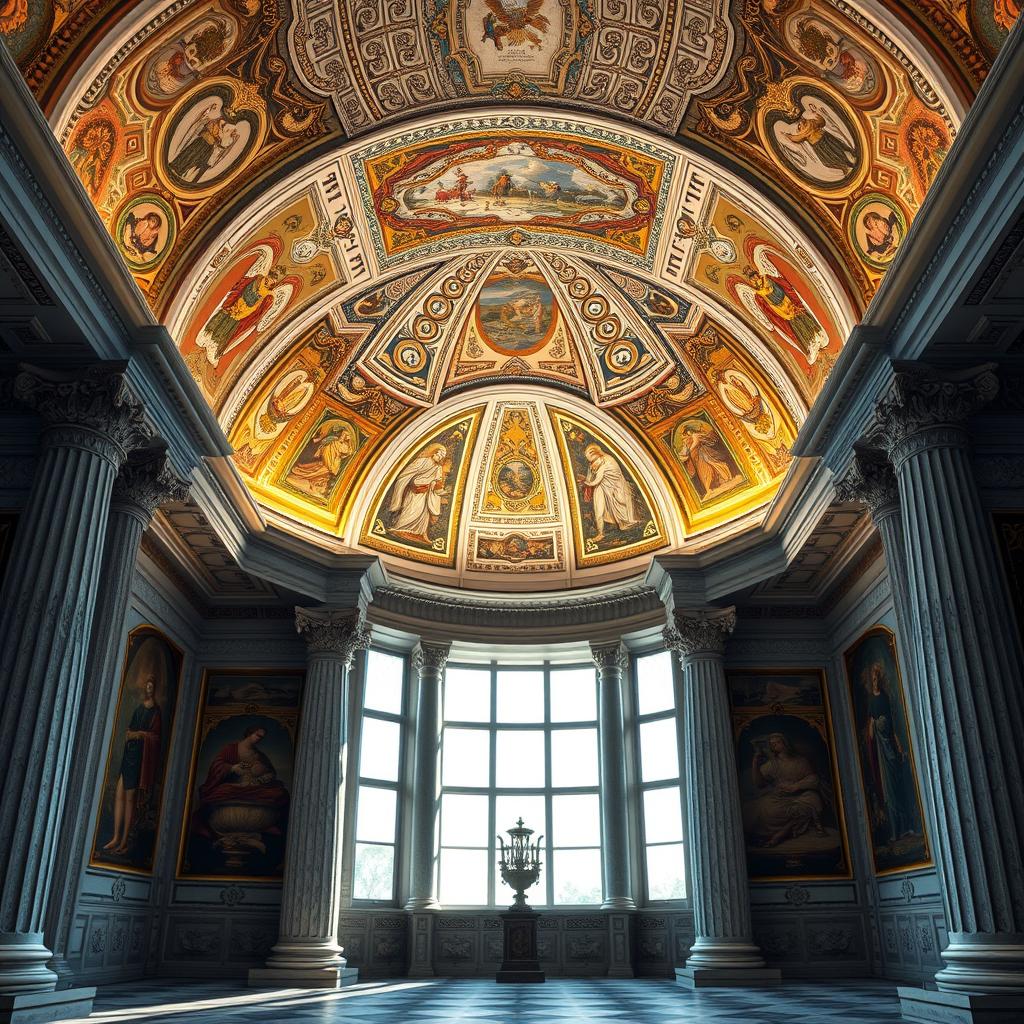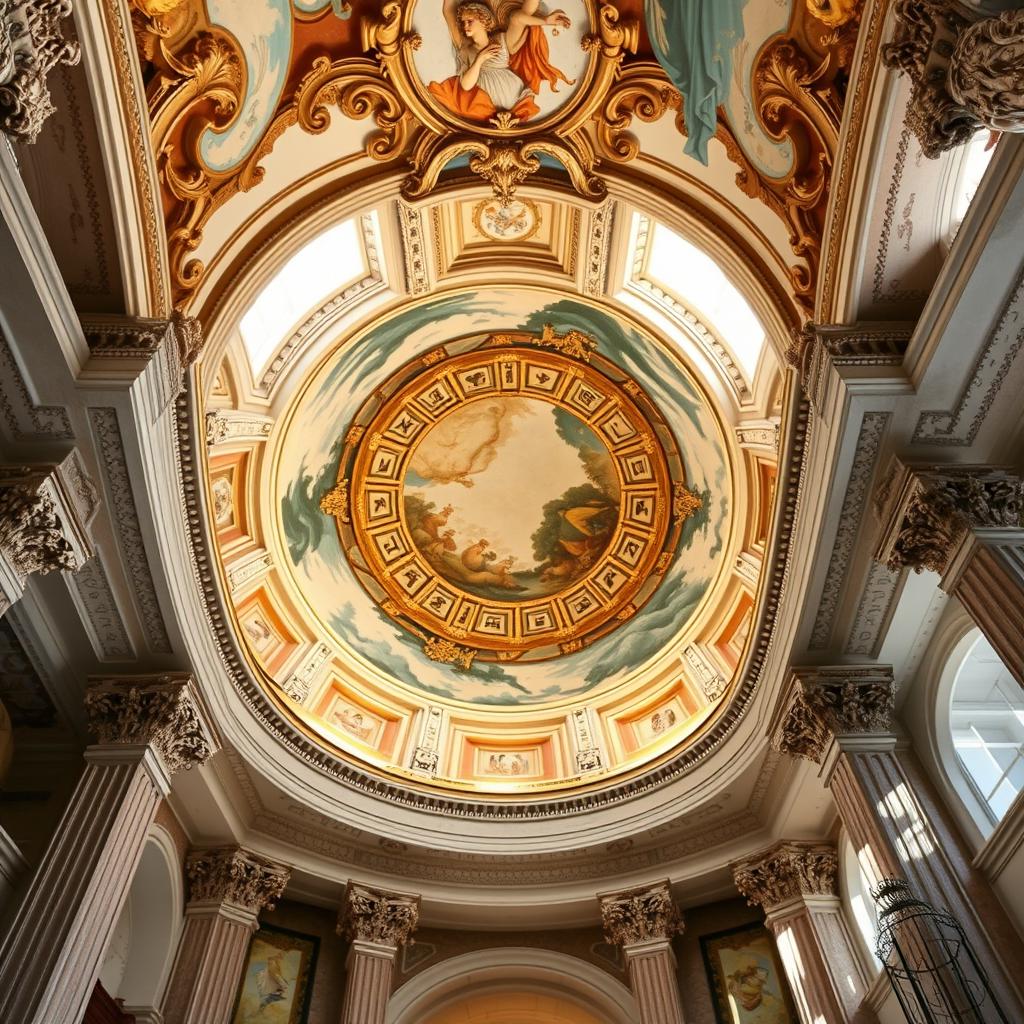The ancient Roman civilization is a fascinating subject that encompasses various aspects such as governance, religion, societal structure, and legal frameworks.
Governance: The Transition from Monarchy to Complex Political Structure
The structure of power during the Roman Republic (509 to 27 BCE) marked a significant transition in governance from monarchy to a complex political structure. This system laid the foundation for modern democracies and established key principles of governance that resonate today.
Religion: A Cornerstone of Roman Identity
Religion played a vital role in the lives of the Romans. It was not merely a set of beliefs but a comprehensive system that intertwined with every aspect of their lives. From the early days of the Roman Republic to the expansive reach of the Empire, exploring the ancient Roman religion reveals how it served as a cornerstone of Roman identity, influencing politics, culture, and social structures.
The Rise and Fall: A Tapestry of Cultures
The rise and fall of this ancient empire is another intriguing aspect. Spanning over a millennium, this civilization has left an indelible mark on the world, shaping politics, culture, and society in ways that continue to resonate today. The rise and fall of the Roman Empire was not merely a political entity; it was a tapestry woven from diverse cultures, languages, and traditions.
Gender Dynamics: The Legal Status of Women
Moreover, the legal status of women in ancient Rome reflects a complex interplay of rights and restrictions that significantly influenced gender dynamics. Understanding the legal status of Roman women provides insights into how their citizenship was intrinsically linked to their relationships with men.
Enduring Influence: Ancient Roman Law on Modern Legal Systems
Finally, it’s important to note the enduring influence of ancient Roman law on modern legal systems. The Corpus Juris Civilis, or Body of Civil Law, commissioned by Emperor Justinian I in the 6th century AD, serves as a comprehensive codification that not only preserved ancient Roman legal principles but also adapted them to contemporary society’s needs. Its creation marked a crucial turning point in the development of legal systems, especially in Europe.

The Evolution of Roman Interior Design
Roman interior design did not emerge in isolation. It drew heavily from Greek and Etruscan influence, adopting and adapting their architectural principles to suit Roman needs and ambitions. The Greeks contributed refined decorative styles and columnar orders, while the Etruscans introduced early use of arches and vaults—elements that Romans would later innovate extensively.
Arches, vaults, and domes became defining features of Roman construction. The arch allowed for stronger and wider openings compared to traditional post-and-lintel systems. This innovation led to the widespread use of:
- Barrel vaults, which created tunnel-like ceilings ideal for corridors and large halls.
- Groin vaults, formed by intersecting barrel vaults, enabling more complex spatial arrangements.
- Domes, offering monumental overhead enclosures with impressive structural ingenuity.
These elements not only served structural purposes but also transformed interiors by adding volume, height, and a sense of grandeur.
A crucial factor behind this architectural evolution was the development of Roman concrete (opus caementicium). This material revolutionized building techniques by allowing:
- More flexible forms unconstrained by stone blocks.
- Larger spans without internal supports.
- Rapid construction with durable results.
Roman concrete enabled architects to create expansive interior spaces crowned by soaring vaulted ceilings and massive domes, such as those found in the Pantheon. This innovation made it possible to design interiors that were both open and ornamentally rich, setting new standards in architectural sophistication that had not been achievable before.
This synthesis of inherited knowledge with groundbreaking materials propelled Roman interior design into a new era where structural prowess met artistic expression seamlessly.

Exploring Different Types of Vaulted Ceilings in Roman Architecture
Roman architecture, known for its masterpieces of ancient engineering, employed several distinctive types of vaulted ceilings, each contributing uniquely to the interior environment. These vaults were not only structural solutions but also aesthetic elements that defined the character of Roman spaces.
1. Barrel Vaults
- Shaped like a semi-cylindrical tunnel, barrel vaults extend in a straight line, resembling a continuous arch.
- Their simplicity made them easy to construct and ideal for long corridors or hallways.
- Barrel vaults created elongated, rhythmic interior spaces but limited natural light because their solid surfaces blocked windows on the sides.
2. Groin Vaults
- Formed by the perpendicular intersection of two barrel vaults, groin vaults produce a more complex ceiling with four curved surfaces meeting at edges called groins.
- They allowed Romans to cover rectangular spaces efficiently while directing weight to the corners, enabling larger openings in walls for windows or doors.
- This design enhanced interior brightness and spatial openness compared to barrel vaults.
3. Cloister Vaults (also known as domical or pavilion vaults)
- Consist of four concave surfaces curving inward toward a central point, creating a dome-like effect over square rooms.
- Cloister vaults added height and volume without requiring circular room shapes.
- Their smooth curves contributed an elegant visual transition between vertical walls and ceilings.
4. Domes
- Perfectly hemispherical or slightly elongated, domes topped important public buildings like baths and temples.
- Domes symbolized the heavens and added monumental scale to interiors while permitting large open spaces beneath without internal supports.
- Openings such as oculi allowed natural light to flood the space from above, creating dramatic illumination effects.
These vaulted ceiling types shaped Roman interiors by manipulating height, volume, and light availability. Their form dictated how space was experienced—whether enclosed and focused or expansive and airy—while offering architects multiple options to marry function with grandeur. The impact of these architectural choices was felt across different social classes in ancient Rome, as reflected in their daily life, which varied significantly between patricians and plebeians.
Artistic Embellishments on Roman Ceilings: A Closer Look at Stucco Work, Gilding, Painting, and Motifs
Roman interior design elevated the role of ceilings beyond structural necessity by applying a range of artistic techniques that transformed these surfaces into visual masterpieces. Stucco work stood out as a favored method for adding texture and depth to vaulted ceilings. This plaster material was molded into detailed reliefs, often enhanced further through gilding and painting.
Stucco Work with Gilding and Painting
Stucco provided a versatile base for creating intricate three-dimensional designs. Gilding involved laying thin layers of gold leaf over stucco elements, bringing luminosity and luxury to interior spaces. Painted stucco added color contrasts and highlighted fine details in the architectural ornamentation. These combined techniques allowed artisans to produce ceilings that dazzled with both material richness and elaborate craftsmanship.
Popular Motifs in Roman Decorative Ceilings
The decorative vocabulary on Roman ceilings frequently incorporated symbolic and aesthetic motifs:
Acanthus leaves: A classical motif derived from Greek architecture, symbolizing enduring life and vitality. Stylized in swirling forms, acanthus leaves adorned cornices and friezes with elegance. Geometric patterns: Repeated shapes such as squares, circles, rosettes, and the Greek key (meander) created rhythmic visual order across ceiling panels. Figural elements: Cherubs, mythological creatures, garlands, and swags enriched the narrative quality of ceiling art. These motifs were not only decorative but communicated cultural values and artistic sophistication. The impact of these decorative ceilings extended beyond mere embellishment by turning architectural features into canvases that celebrated Roman artistry and identity.
However, it’s important to remember that this luxurious interior design was not just reserved for the elite. The plebeians, or common people of ancient Rome, also played a significant role in the societal fabric of Rome. Their influence extended into various aspects of life including politics and economics, which were significantly shaped by their needs and demands.
Moreover, the engineering feats of ancient Rome also played a crucial role in facilitating these artistic expressions. The advanced techniques used in Roman engineering not only ensured effective governance but also served as a foundation for contemporary infrastructure systems.
In addition to engineering and social dynamics, the rich tapestry of art and culture during this period is noteworthy. The artistic expressions seen in sculpture and mosaics from this era are testaments to the ingenuity and creativity of a civilization that thrived for centuries.

Incorporating Ornamental Elements: Mosaics, Tesserae Tiles, and Marble in Roman Interior Design
Roman interiors often dazzled with the intricate use of mosaics, crafted from thousands of tiny pieces called tesserae tiles. These tesserae were carefully cut from materials such as colored stone, glass, and ceramic. Mosaics adorned floors, walls, and sometimes ceilings, serving both decorative and symbolic purposes. The detailed scenes ranged from mythological narratives to everyday life imagery, creating a rich visual texture that communicated cultural values and artistic sophistication.
The Artistry Behind Mosaics
The precision required to assemble these mosaics was remarkable. Artisans would arrange tesserae in complex geometric patterns or figurative designs with astonishing accuracy. This technique allowed Romans to blend durability with elegance, since tesserae tiles resisted wear while maintaining vivid colors over centuries.
Marble: A Symbol of Luxury
Marble held a special place in Roman interior design as a symbol of luxury and permanence. It was prized not only for its natural beauty but also for its versatility. Marble slabs covered floors in grand villas and public spaces like basilicas and baths. Columns, cornices, fireplace surrounds, and sculptural elements frequently featured marble to elevate the aesthetic quality of interiors.
Different types of marble were imported from across the empire—Carrara white marble from Italy, colorful marbles from Egypt and Asia Minor—each adding unique shades and veining patterns. The contrast between smooth polished marble surfaces and textured mosaics created a layered richness inside Roman buildings.
The Interplay of Mosaics and Marble
This interplay between mosaics made of tesserae tiles and expansive marble installations defined much of the ornamental character found in Roman interiors. Decorative floors combined mosaic artistry with elegant marble borders; walls might feature marble panels framed by intricate mosaic friezes. Such combinations enhanced architectural forms while emphasizing the wealth and status of inhabitants through lavish materials and craftsmanship.
Power Dynamics Reflected in Design
These luxurious interiors were not just a reflection of personal wealth but also represented the power dynamics within the Roman Empire. The reach of the Roman Army, which played a crucial role in the growth and upkeep of the empire, is a testament to this power. Furthermore, the extensive network of Roman roads facilitated trade and movement across vast territories, further enhancing the empire’s economic strength.
Cultural Influences on Decorative Themes
The themes depicted in Roman mosaics often drew inspiration from Roman mythology, which has had a lasting influence on modern culture. Additionally, the fascination with gladiators during this era highlights another aspect of Roman society—an intriguing blend of admiration for bravery coupled with an understanding of their victimization in a complex social system as explored in this article about gladiators.
Historical Shifts Shaping Governance Structures
Moreover, the transition from monarchy to a republican system marked by the birth of the Roman Republic significantly influenced governance structures that endure today. This historical context enriches our understanding of how ornamental elements in architecture were not merely aesthetic choices but also reflections of broader societal values and historical shifts within the Roman Empire.
The patricians were the wealthy and powerful elite of ancient Rome, distinct from the working-class plebeians. They were usually rich landowners who had significant influence and control over the socio-economic landscape of the time.
The Enduring Legacy: From the Romanesque Style to the Renaissance Style – How Decorative Ceilings and Vaults Shaped Western Architecture’s Future
Roman decorative ceilings and vaults left a profound mark on Western architecture influence that persisted well beyond antiquity. The structural innovations of the Romans—particularly the use of arches, barrel vaults, groin vaults, and domes—became foundational elements in the Romanesque style emerging in medieval Europe.
Romanesque architects embraced vaulted ceilings to achieve:
- Robust structural integrity for large churches and monasteries.
- Enhanced acoustics suited for liturgical functions.
- Aesthetic continuity with classical architectural language.
The characteristic rounded arches and thick walls of Romanesque buildings owe much to Roman precedents. Vaulted ceilings were often richly decorated with frescoes, mosaics, or carved motifs, echoing the artistic embellishments seen in Roman interiors.
Transitioning into the Renaissance period, architects revived and expanded upon Roman principles with renewed emphasis on proportion, symmetry, and classical ornamentation. Renaissance decorative ceilings featured:
- Complex coffered dome designs inspired by Roman models like the Pantheon.
- Intricate stucco work combined with painted mythological scenes.
- A refined interplay between structure and ornament that highlighted humanist ideals.
This continuation of architectural mastery demonstrated how Decorative Ceilings and Vaults: The Height of Roman Interior Design remained a source of inspiration. The Renaissance not only celebrated Rome’s technical achievements but also its artistic richness, ensuring these vaulted forms stayed central to Western architectural identity.
Conclusion
The impact on architectural history of decorative ceilings and vaults is a testament to Roman creativity and artistic vision. These elements were not just practical solutions; they represented the pinnacle of Roman interior design, combining usefulness with stunning beauty.
Key points to remember:
- Decorative ceilings and vaults transformed interior spaces, introducing light, height, and grandeur.
- Their intricate artistry, from stucco work to mosaics, set standards for luxury and sophistication.
- The innovations pioneered by Romans became foundational in shaping Western architectural styles for centuries.
Understanding these ceilings and vaults means recognizing how Roman architecture continues to inspire modern design. Their influence can be seen in the arches and domes that define iconic buildings worldwide. Every time vaulted ceilings evoke awe and decorative motifs capture cultural richness, we witness the legacy of Roman mastery.
Decorative ceilings and vaults are more than historical features—they represent a crucial part of architectural evolution that still resonates with us today. This story is intertwined with a larger narrative of Roman influence, which includes significant figures like Scipio Africanus, whose accomplishments not only altered the course of history but also established Rome’s supremacy in various fields, including architecture.

